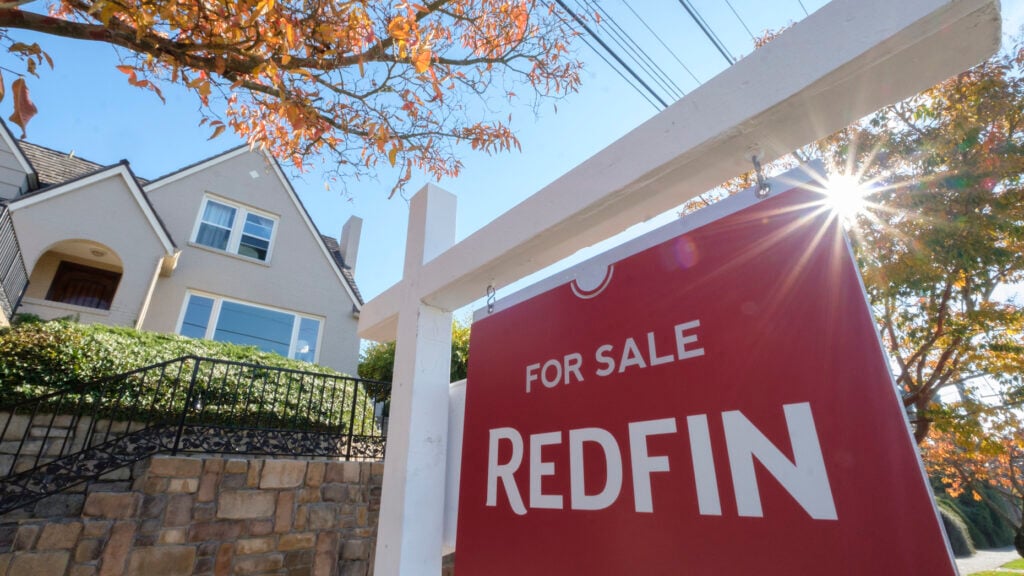Sales of existing homes ticked down 5.4 percent between May and June, falling 14.2 percent from a year ago, as median prices rose to $416,000, according to the National Association of Realtors.
In a shifting real estate market, the guidance and expertise that Inman imparts are never more valuable. Whether at our events, or with our daily news coverage and how-to journalism, we’re here to help you build your business, adopt the right tools — and make money. Join us in person in Las Vegas at Connect, and utilize your Select subscription for all the information you need to make the right decisions. When the waters get choppy, trust Inman to help you navigate.
Existing home sales slid for the fifth straight month in June, according to data released Wednesday, marking the latest sign of significant cooling in the housing market.
Sales of existing homes ticked down 5.4 percent between May and June, and were down 14.2 percent from a year ago, according to data released Wednesday by the National Association of Realtors.
Meanwhile, the median price of an existing home climbed 13.4 percent from June 2021, hitting a new high of $416,000, and the inventory of unsold existing homes climbed to 1.26 million by the end of June, the equivalent of a 3 month supply at the current sales pace, an increase from the 2.6 month supply recorded in May — a sign more buyers are pulling back from the market, according to experts.
“Falling housing affordability continues to take a toll on potential home buyers,” NAR Chief Economist Lawrence Yun said in a statement. “Both mortgage rates and home prices have risen too sharply in a short span of time.”
Lawrence Yun | Photo credit: NAR
Properties typically stayed on the market for 14 days in June, down from 16 days in May and 17 days in June 2021, painting an unclear picture given the increasing supply and decreasing competition among buyers. The 14 days on the market are the fewest since NAR started tracking the data point in 2011.
“Finally, there are more homes on the market,” Yun said. “Interestingly though, the record-low pace of days on market implies a fuzzier picture on home prices. Homes priced right are selling very quickly, but homes priced too high are deterring prospective buyers.”
Despite economic uncertainty, a growing share of first-time buyers entered the market, with first-time buyers making up 30 percent of purchases compared to 27 percent in May, but down from 31 percent in June 2021. The continued presence of first-time buyers despite growing mortgage rates should be a cause for optimism, according to Neda Navab, president of national brokerage operations for Compass.

Neda Navab | Credit: Compass
The same fundamental drivers of housing demand that have driven the market the past several years, including waves of younger buyers entering into their home buying years and an unrelenting rise in rents, remain firmly in place,” Nevab said in a statement. “Buyers in the market today may find more negotiating room than they’ve had in years, and a slowly growing share of first-time buyers proves they are certainly aware that locking in a home today at a long-term price is a terrific hedge against inflation and rising rents.”
Other experts suggested that moving forward, price points rather than available inventory would be the chief factor excluding potential buyers from the market.
“Based on trends at this stage in the housing and business cycle, I expect affordability to be the bigger driver than availability moving forward,” Danielle Hale, chief economist for Realtor.com said in a statement.
Email Ben Verde



 Are You Interested in West Eleventh Residences Miami?
Are You Interested in West Eleventh Residences Miami? Are You Interested in ONE Park Tower by Turnberry?
Are You Interested in ONE Park Tower by Turnberry? Are You Interested in Diesel Wynwood Condominium?
Are You Interested in Diesel Wynwood Condominium? Are You Interested in Five Park Miami Beach?
Are You Interested in Five Park Miami Beach? Are You Interested in Cipriani Residences Miami?
Are You Interested in Cipriani Residences Miami? Are You Interested in Bentley Residences Miami?
Are You Interested in Bentley Residences Miami? Are You Interested in Baccarat Residences Brickell?
Are You Interested in Baccarat Residences Brickell? Are You Interested in Aria Reserve Miami?
Are You Interested in Aria Reserve Miami? Are You Interested in 888 Brickell Dolce & Gabbana | Miami?
Are You Interested in 888 Brickell Dolce & Gabbana | Miami? Are You Interested in 600 Miami WorldCenter?
Are You Interested in 600 Miami WorldCenter? Are You Interested in HUB MIAMI RESIDENCES?
Are You Interested in HUB MIAMI RESIDENCES? Are You Interested in WALDORF ASTORIA RESIDENCES?
Are You Interested in WALDORF ASTORIA RESIDENCES?